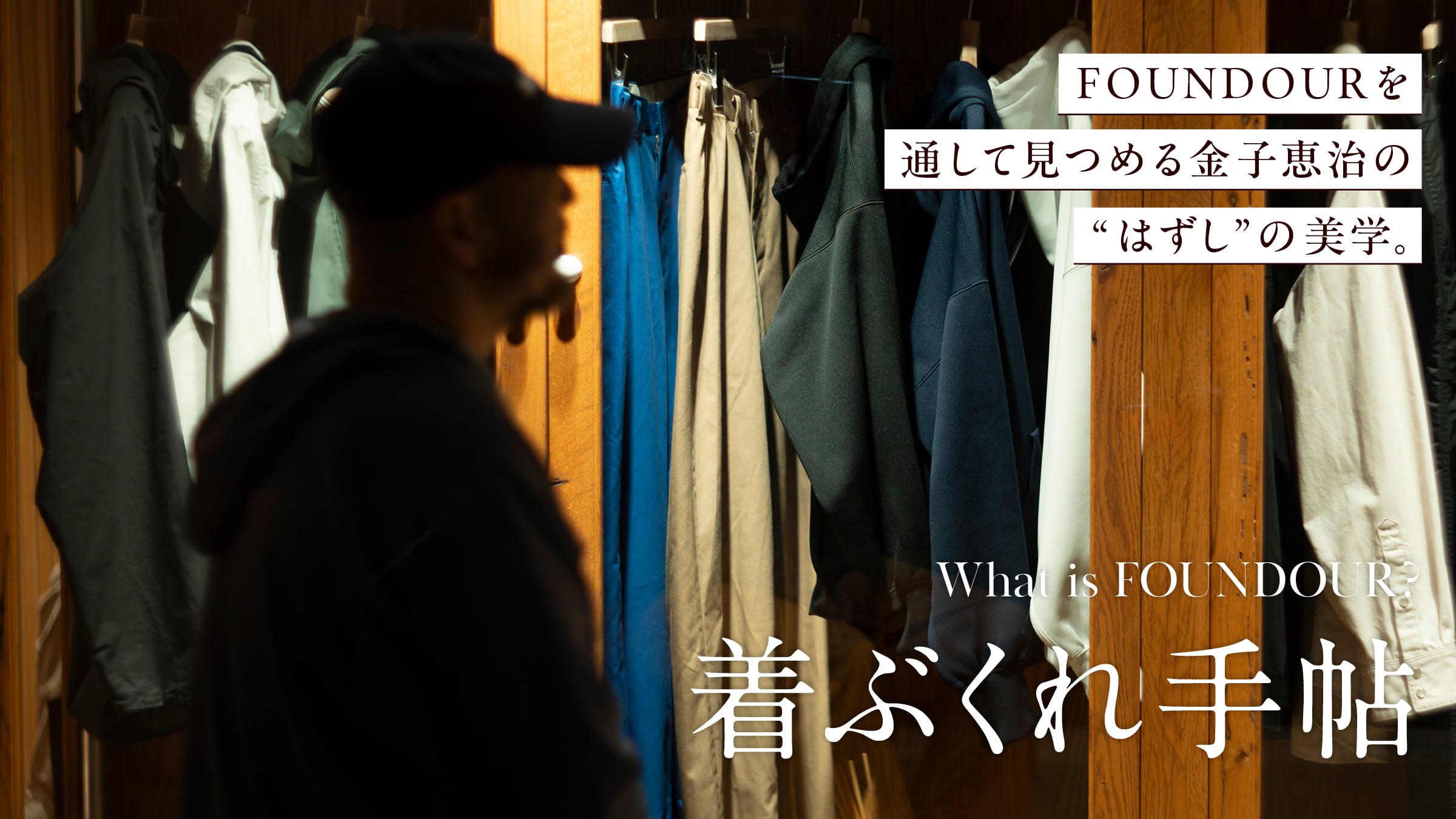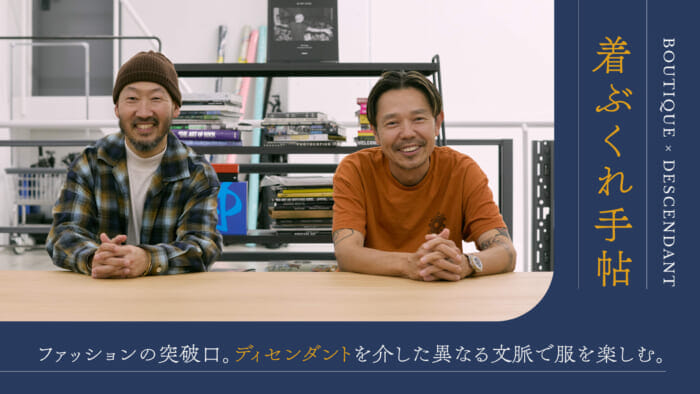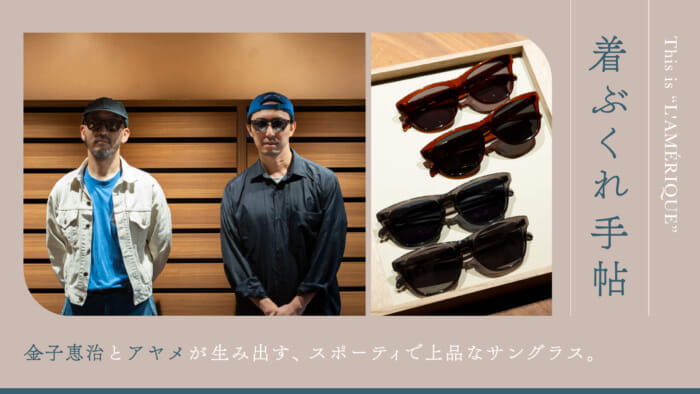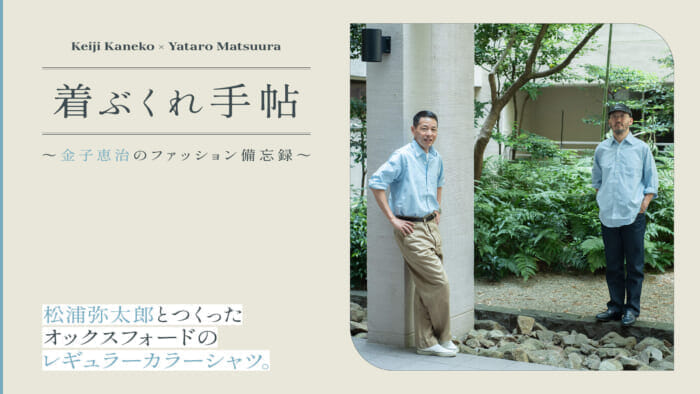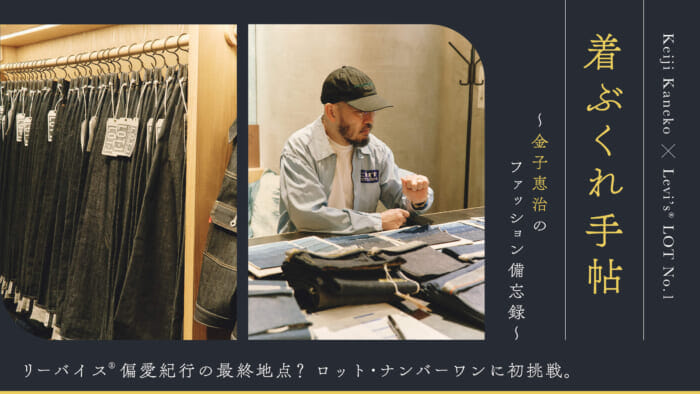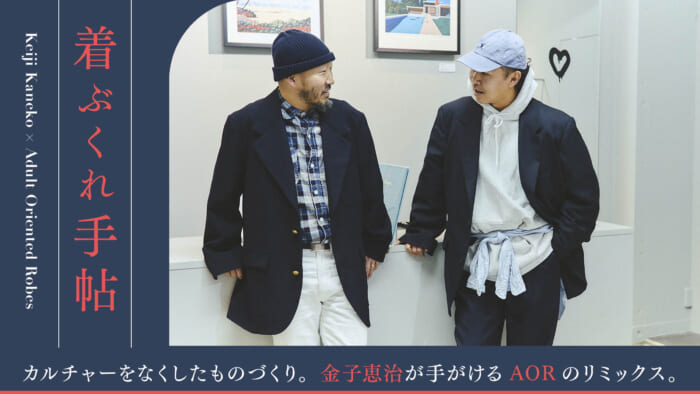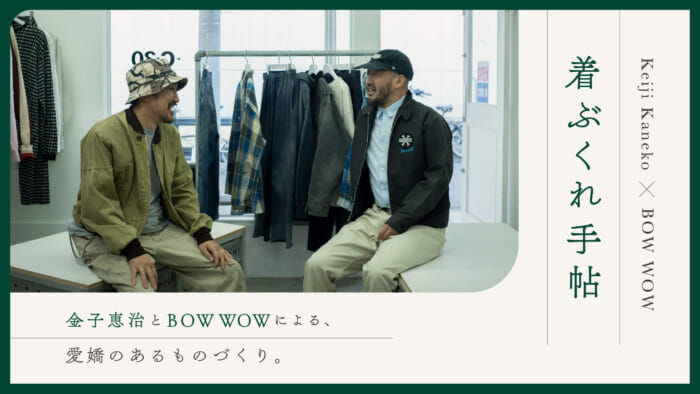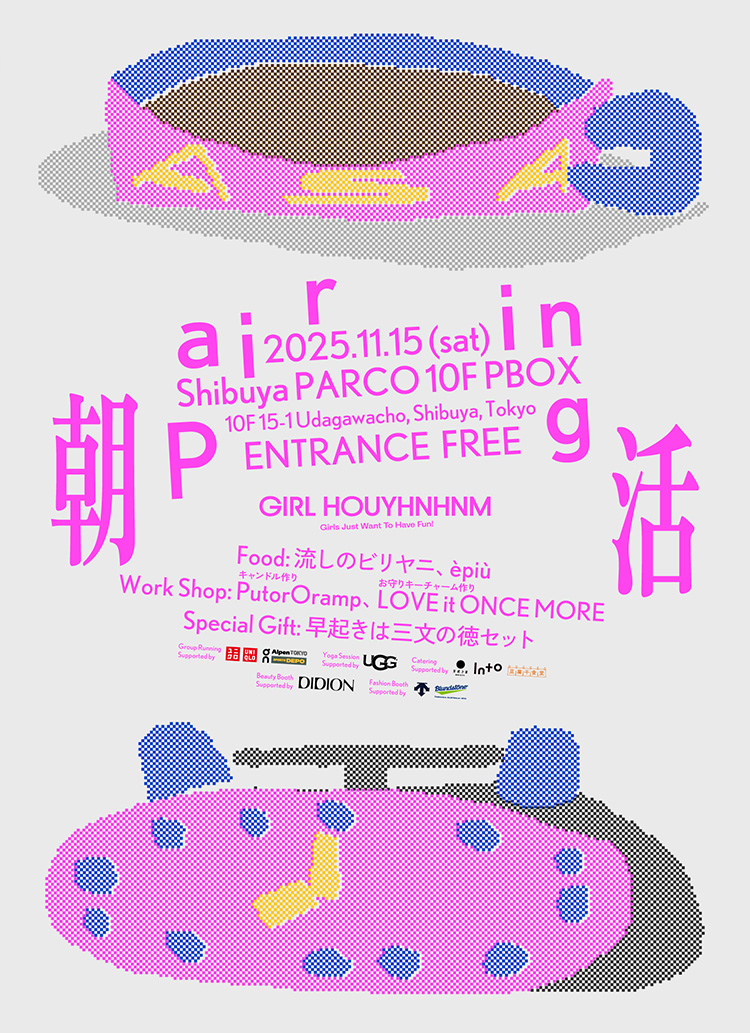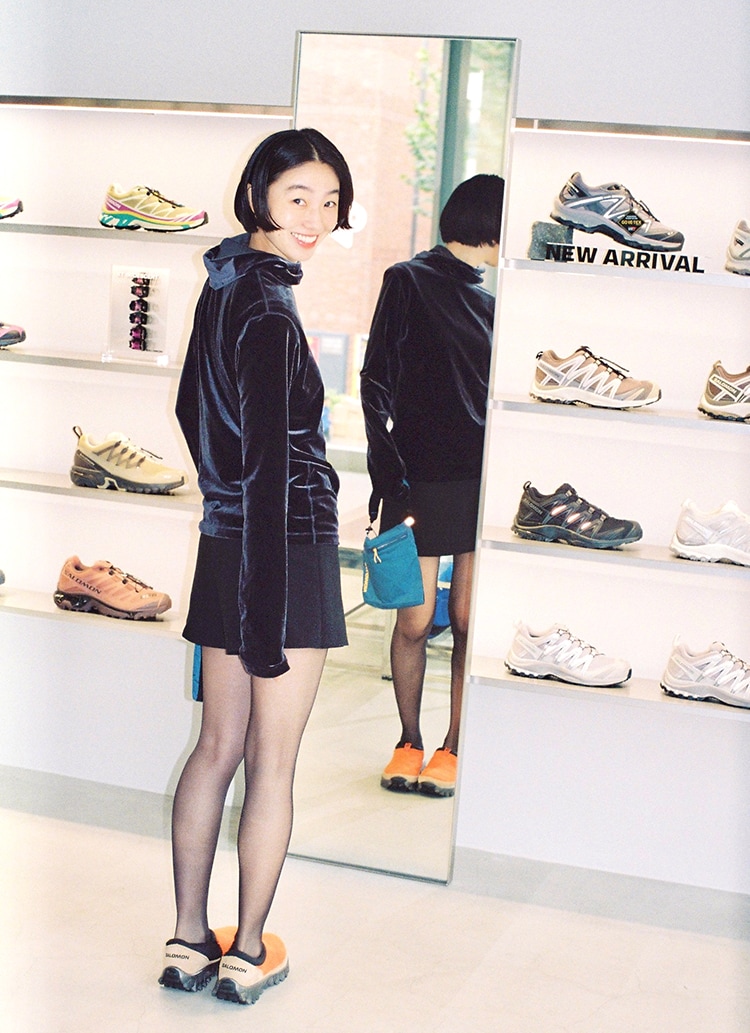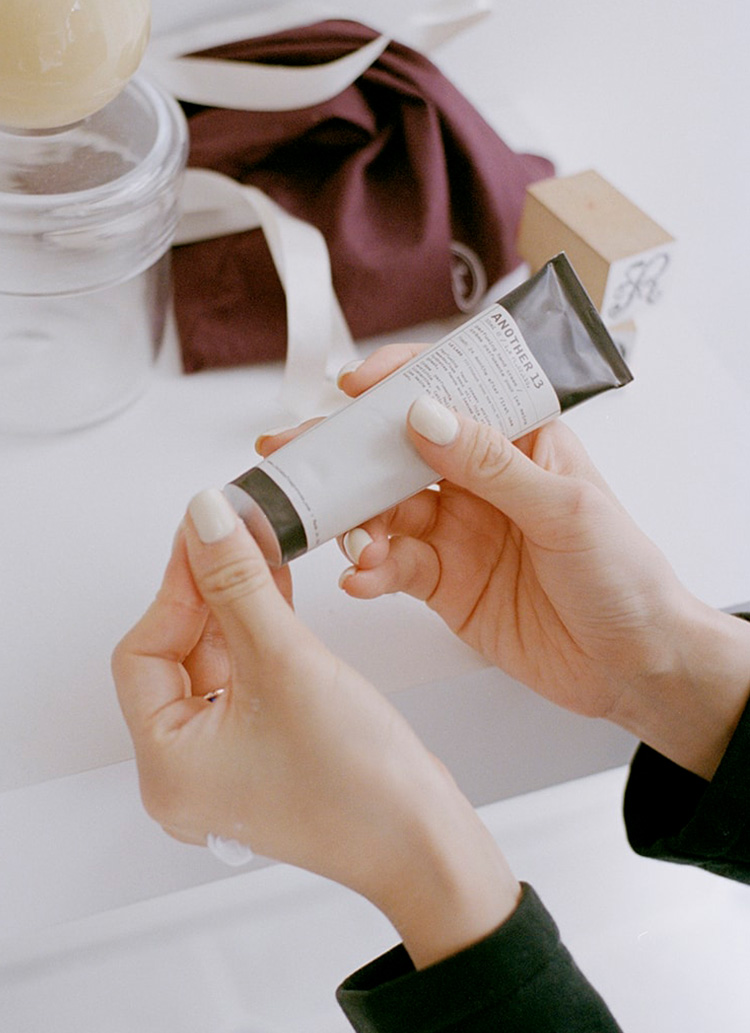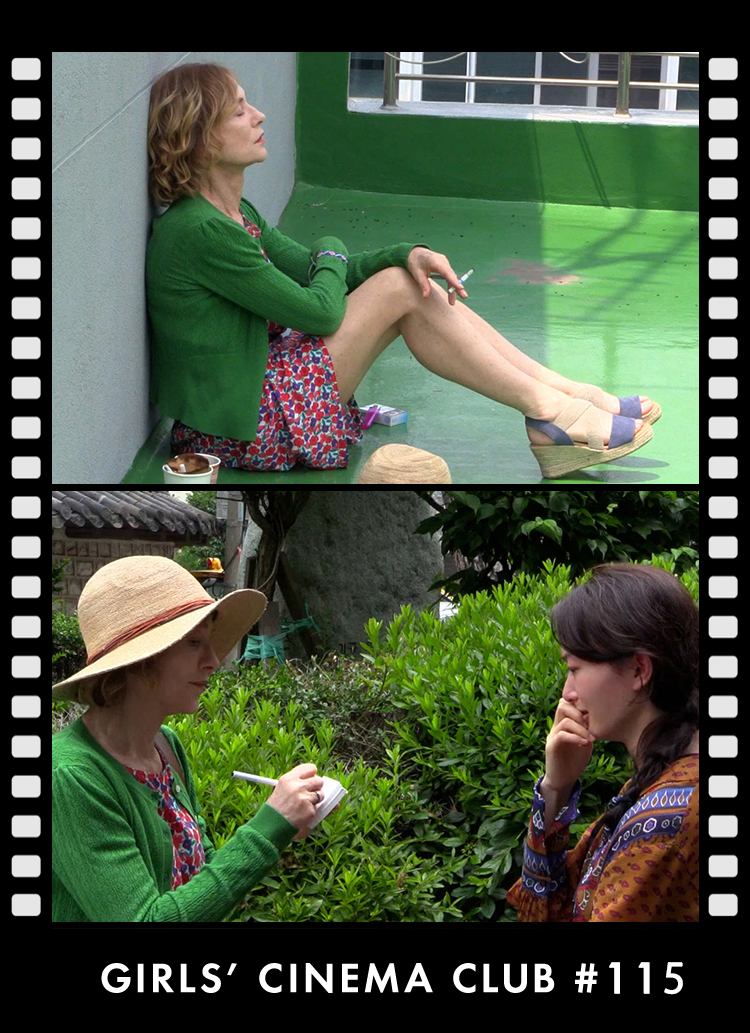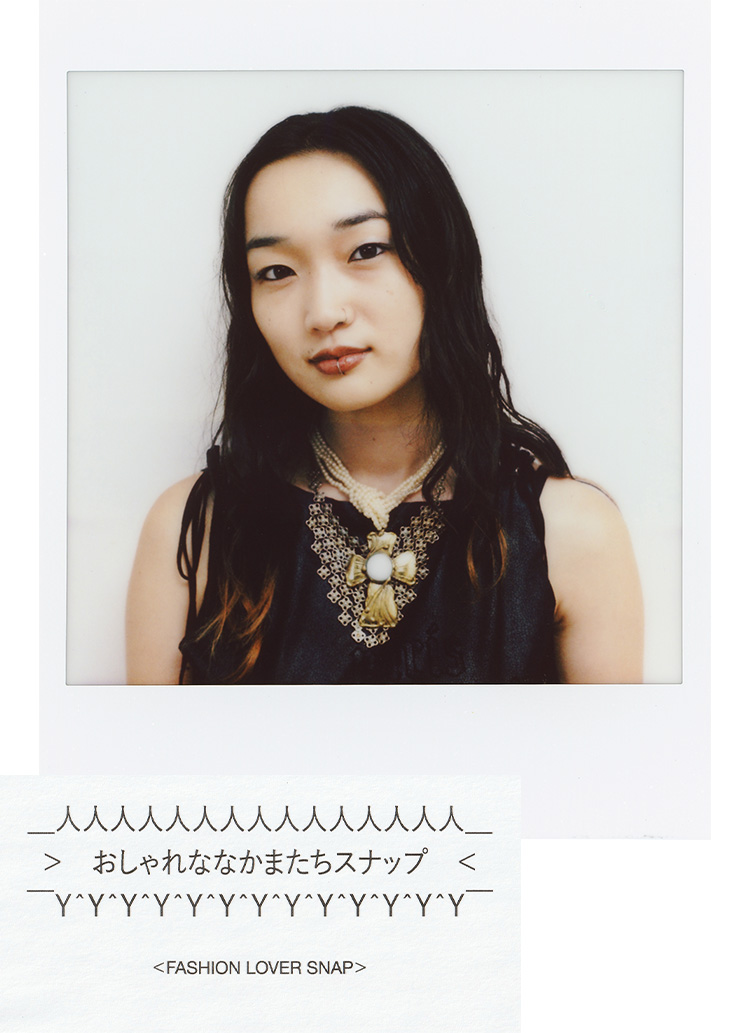There is a sense somewhere that it is like arranging a wardrobe.
What do you mean by "removed" (laughs)?
Kaneko: Indeed. I wonder why I have to take it off (laughs). But people who I think are chic are all relaxed.
I think that "out of place" is something that is born out of the existence of the orthodoxy. If you remove it without knowing it, it is no longer an "out of place" thing to do.
Kaneko: Yes, I think it is based on that kind of basic dressing. Patagonia's clothes are also to be worn in nature, so they are not to be worn in nature. Riding a four-wheel-drive car in the city is also a distraction in that sense. Knowing this and doing it without knowing it have different meanings. It's almost a self-indulgence, but I'd be happy if you can relate to it.
Do you always think about that kind of thing?
Kaneko: I am thinking about it. I have a huge complex, so I feel that even if I were to dress up in a straightforward manner, it wouldn't work. So if I want to be cooler than others, I have to take it off. I have to compete with my sense of style.

Did you develop your sense of style through your experience as a buyer?
Kaneko: I think so. I have really traveled all over the world, and I have come into contact with many cultures, gained knowledge, and seen many ways of dressing. Through these experiences, I think I have developed a kind of standard for judging what is right and what is not.
As for "FOUNDER," the reference clothes are from different eras and genres. Most of the clothes are American, but other than that, they are a collection of completely different clothes. However, there is no doubt that these are things that I really like. There is a sense of arranging a wardrobe.

MOUNTAIN PARKA ¥74,800
This is a piece based on the mountain parka of a well-known outdoor brand that was born in the 1970s and disappeared in the 1980s. While following the characteristic Velcro design, this parka is made of high-density woven cotton, and is made with a mysterious balance of thin and padded fabrics. The design also has a nice technical mood of the time, different from the classic Mampa. The coloring is also attractive, with an eye toward urban wear.

DENIM PANTS ¥36300, BLACK DENIM PANTS ¥36,300
The 1937 model of that item number, known as the standard for denim pants, has a straight silhouette that suits everyone. This pair is based on such an item, but made of non-selvic fabric. The cinch back, rivets on the inseam, and other details from that era are retained, but the construction is authentic. The hybrid design is a combination of vintage and new items, and is very appealing. The black color is also made of stretchy fabric.

W FACE HOODIE ¥35,200
The double-faced post-fabric parka is an item that has soared in price on the vintage market due to its rarity. The two layers of thick fabric made it heavy and difficult to dry when wet. Even so, it was coveted by enthusiasts, and FOUNDOUR has recreated details from that era, such as the retrofitted hood and wide body width. Furthermore, the use of 100% polyester fabric makes it lightweight and quick-drying, evolving it into an item that can be used in the modern age.
What was the buyers' reaction?
Kaneko: I got the sense that people enjoyed listening to the stories behind the items. For example, a double-faced parka is heavy and difficult to wear when it is vintage, and it is also hard to dry. However, by using polyester fabric, it is more comfortable to wear and easier to care for after washing. I get the impression that people enjoyed hearing about such a clever little story.
The challenge is how to convey these stories to the customers. At first glance, the clothes look ordinary, so I think my styling skills will be tested in terms of how to interpret my ideas and incorporate them into the coordination. Of course, the clothes are well-made and can be enjoyed by those who do not read too much into them, but I think those who understand the story will enjoy them even more.
That shows the innocence that is typical of Kaneko-san (laughs).
Kaneko: If this way of thinking becomes more widespread, I think fashion will be more enjoyable. I think this approach is a uniquely Japanese culture. Vintage, cheap chic, and various other cultures exist, and it is fun to mix and match them in styling. I would be happy if that could be conveyed.


You have only just started, but I would like to hear about the future of "Founders".
Kaneko: I don't think my logic for "founders" will change, but once I learn how to make clothes, I may try to make fabrics. I might make clothes from good fabrics and sew them in strange ways. There may be such possibilities. That is still a long way off, though (laughs).
It would also be interesting to collaborate with someone else. I don't think that everything I choose is my own, so it would be possible to have another selector and create clothes from his/her point of view in choosing things.
I want women to wear them, too, but it's hard to stick to what I said about vintage. But the patterns are good, so I think they fit women well when they try them on. So, I don't talk about it too much, but rather present it as a piece of clothing. I feel that this will give birth to interesting styling from a different point of view.
It seems like you are expanding your horizons more and more.
Kaneko: I still buy a variety of clothes and participate in various projects. As I absorb more and more things there, I think my views will change. I would like to continue to make use of the perspectives I have gained there.


